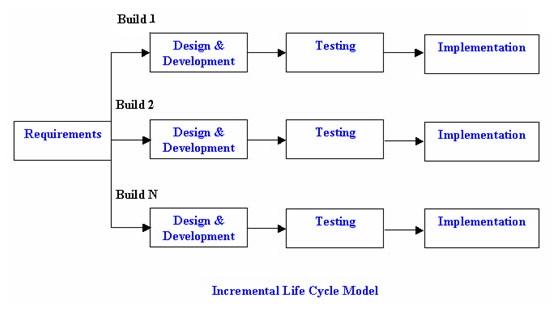What is Incremental model- advantages, disadvantages and when to use it?
In incremental model the whole requirement is divided into various builds. Multiple development cycles take place here, making the life cycle a “multi-waterfall” cycle. Cycles are divided up into smaller, more easily managed modules. Each module passes through the requirements, design, implementation and testing phases. A working version of software is produced during the first module, so you have working software early on during the software life cycle. Each subsequent release of the module adds function to the previous release. The process continues till the complete system is achieved.
For example:
In the diagram above when we work incrementally we
are adding piece by piece but expect that each piece is fully finished.
Thus keep on adding the pieces until it’s complete. As in the image
above a person has thought of the application. Then he started building
it and in the first iteration the first module of the application or
product is totally ready and can be demoed to the customers. Likewise in
the second iteration the other module is ready and integrated with the
first module. Similarly, in the third iteration the whole product is
ready and integrated. Hence, the product got ready step by step.
Diagram of Incremental model:
Advantages of Incremental model:
- Generates working software quickly and early during the software life cycle.
- This model is more flexible – less costly to change scope and requirements.
- It is easier to test and debug during a smaller iteration.
- In this model customer can respond to each built.
- Lowers initial delivery cost.
- Easier to manage risk because risky pieces are identified and handled during it’d iteration.
- Needs good planning and design.
- Needs a clear and complete definition of the whole system before it can be broken down and built incrementally.
- Total cost is higher than waterfall.
- This model can be used when the requirements of the complete system are clearly defined and understood.
- Major requirements must be defined; however, some details can evolve with time.
- There is a need to get a product to the market early.
- A new technology is being used
- Resources with needed skill set are not available
- There are some high risk features and goals.
